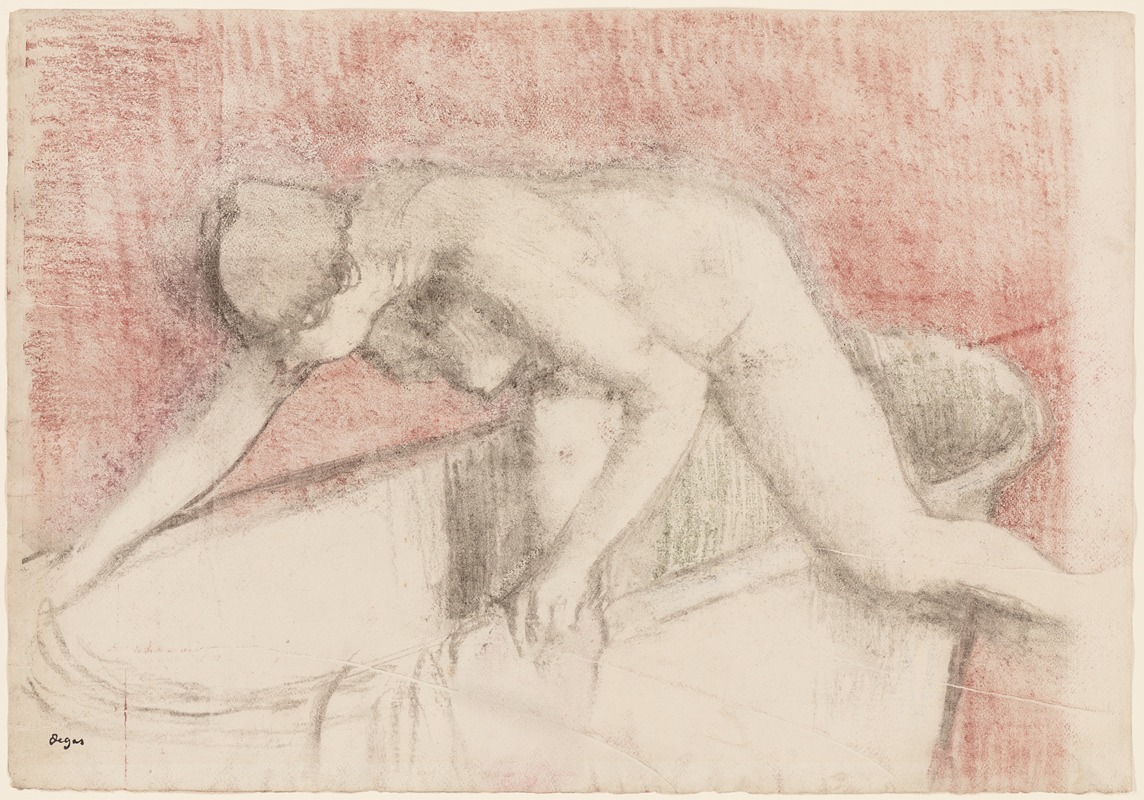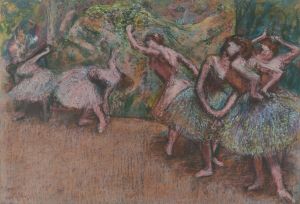
The Bath
A hand-painted replica of Edgar Degas’s masterpiece The Bath, meticulously crafted by professional artists to capture the true essence of the original. Each piece is created with museum-quality canvas and rare mineral pigments, carefully painted by experienced artists with delicate brushstrokes and rich, layered colors to perfectly recreate the texture of the original artwork. Unlike machine-printed reproductions, this hand-painted version brings the painting to life, infused with the artist’s emotions and skill in every stroke. Whether for personal collection or home decoration, it instantly elevates the artistic atmosphere of any space.
Edgar Degas, a prominent French artist associated with the Impressionist movement, is renowned for his masterful depiction of the human form and his innovative approach to composition. One of his notable works, "The Bath," exemplifies his skill in capturing intimate, everyday moments with a unique perspective.
"The Bath" is a pastel drawing created by Degas in the late 19th century, a period during which he extensively explored the theme of women in private, domestic settings. This work is part of a series where Degas focused on the subject of women bathing, a theme that allowed him to study the human body in various poses and movements. Unlike many of his contemporaries, Degas often chose to depict his subjects in candid, unguarded moments, providing a glimpse into their private lives.
In "The Bath," Degas employs his characteristic use of pastel, a medium he favored for its ability to convey texture and depth. The work showcases a woman seated in a tub, her back turned to the viewer, engaged in the act of bathing. This choice of perspective is typical of Degas, who often opted for unconventional angles that lend a sense of immediacy and realism to his work. The composition is intimate, drawing the viewer into the private world of the subject.
Degas's use of color and light in "The Bath" is particularly noteworthy. He employs a muted palette, with soft blues, pinks, and creams, creating a serene and contemplative atmosphere. The play of light across the woman's skin and the surrounding environment highlights Degas's keen observational skills and his ability to render the subtleties of flesh and fabric. The texture of the pastel adds a tactile quality to the work, enhancing the sense of realism.
Thematically, "The Bath" reflects Degas's interest in capturing modern life and the fleeting, everyday moments that often go unnoticed. His focus on women in domestic settings can be seen as both a continuation of traditional artistic themes and a departure from them, as he presents these scenes with a modern sensibility. Degas's women are not idealized; instead, they are portrayed with a sense of authenticity and individuality.
Degas's approach to composition in "The Bath" is also significant. He often employed cropping and unusual angles, influenced by the burgeoning field of photography and Japanese prints, which were gaining popularity in Europe at the time. These elements contribute to the dynamic and innovative quality of his work, setting him apart from many of his contemporaries.
"The Bath" is housed in the Hill-Stead Museum in Farmington, Connecticut, where it remains an important part of the museum's collection. The work continues to be celebrated for its technical mastery and its insightful portrayal of a private moment, exemplifying Degas's enduring influence on the art world. Through "The Bath," Degas invites viewers to appreciate the beauty and complexity of everyday life, rendered with his distinctive blend of realism and artistry.


















